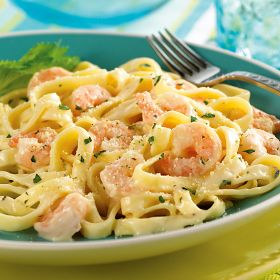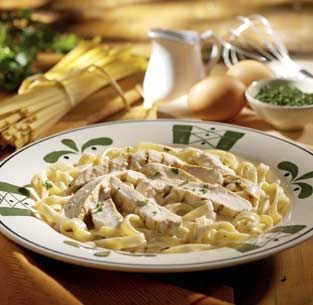By:Njeri Shabazz
Introduction!
Most people think pasta is Italian. It actually originated in China at about 300BC, but the pasta that we are familiar with is the Italian version, which is a little different than the Chinese version. Today, pasta comes in many different shapes. Not only are the shapes different, but the ingredients in some of these pastas are different. For example, Ravioli and tortellini are both filled with ricotta cheese.
The History of Pasta
Some people think the idea of boiling pasta came from the middle east, because the earliest record of noodles being cooked by boiling was in the Jerusalem Talmud (written in the 5th century AD). The word for noodles was "itriyah". It meant dried noodles, not homemade noodles (dried noodles can be stored and eaten later, but fresh, homemade noodles have to be eaten right away). It is believed that the Arabs were introduced to pasta while they were conquering Sicily. The Sicilian word "maccaruni", meaning "made into a dough by force", is most likely the origin of the word, macaroni.
During the 16th century, the Spanish brought all of their food discoveries back to Europe. Among the new foods was the tomato. The first recipe for pasta with tomato sauce wasn't written until 1839. Before tomatoes arrived, people ate pasta dry with their fingers. Some people think that pasta with tomato sauce caused them to use forks, shaping the history of manners and food!
Different Types of Pasta
There are around 500 types of pasta. My favorites are fettuccine, farfalle, lasagna, linguine, macaroni, manicotti, ravioli, tortellini, and ziti.


Fettuccine is a long ribbon of pasta that can be used with all kinds of sauce, but is mostly used with alfredo sauce. Fettuccine was meant to hold light to medium sauces, but is not good with heavy or chunky sauces because the sauce usually goes straight to the bottom. It is made from durum wheat and is usually cooked al dente and it tastes lighter and eggier when it's fresh.


Farfalle means "butterfly" in Italian. Farfalle can be dry or fresh with tomatoes added to the dough. It is usually served with light sauces. I like this one because of it's shape.
Lasagna is the most common type of pasta in some places in Italy. It is made from sheets of egg pasta. The traditional way to serve it is with bolognese meat sauce. It goes well with new, light sauces, fresh vegetables, fish, and cheeses
Linguine is a flattened version of spaghetti. It is good for holding any sauce.
Macaroni is very popular. It has been around for a long time but people began eating it with cheese 500 years ago. It was popular all over Europe, and became popular in america when the English brought it over.
Manicotti is unlike any other pasta. It is large and tubular, and is about 1 inch in diameter and 4 inches long. It has been stuffed with various things, such as ricotta, mozzarella, and parmesan cheese. It can also be stuffed with meat, vegetables, and seafood. 

Ravioli is another popular pasta. It is usually stuffed with ricotta cheese. It can also be stuffed with meat, seafood, mushrooms, and vegetables such as spinach. It can have sauce added to it, but sometimes it does not.
Tortellini is very similar to ravioli, but it is ring shaped, and some people think that it was made to look like a belly button.


Ziti is very similar to penne. It is tube shaped, which is good for holding pasta. Most recipes involving ziti are casserole. It goes well with mushrooms, vegetables, meat, and especially cheese (but that's just my opinion)!
Sauces!
There are a lot of different sauces for pasta. Some people may think that most sauces involve tomatoes, but there are a lot of sauces that do not. One of my favorite sauces is Alfredo sauce. It is traditaionally made with parmesan cheese and butter, but now, some recipes include heavy cream. A lot has been added to alfredo sauce, including chicken, shrimp, and vegetables.


Italian Bolognese sauce is mostly beef. It goes mainly with lasagna, and some people use it with spaghetti. It goes well with short pasta, mainly conchiglie because it is good at "catching" chunky sauces.
Spaghetti sauce was the first sauce for pasta created from tomatoes. It was created by Francesco Leonardi in 1790. Very similar recipes are used for spaghetti today. His recipe involved onions and garlic sauteed in olive oil. After that, tomatoes, pepper, salt, basil, and oregano are added and it simmers for thirty minutes.
Pasta Today!
Today, pasta is eaten all over the world. Different places have different ways of eating pasta. For example, chinese noodles are different from traditional pasta. Chinese pasta can be made with or without eggs, rice noodles usually involve coconut, and there are some noodles that are made from bean paste.



Bibliography!
"Foods in Italy" Retrieved Friday, January 23, 2009 from the World Wide Web from
http://www.world-food-and-wine.com/brief-history-pasta.html
"Pasta-Shapes" Retrieved Friday, January 23, 2009 from the World Wide Web from
http://www.food-info.net/uk/products/pasta/shapes.htm
"History of Pasta" Retrieved Friday, January 23, 2009 from the World Wide Web from
http://www.inmamaskitchen.com/FOOD_IS_ART/pasta/historypasta.html
"Different Types of Pasta: An A-Z Guide" Retrieved January 23, 2009 from the World Wide Web from
http://www.pasta-recipes-made-easy.com/different-types-of-pasta.html
"What is Fettuccine Pasta?" Retrieved January 23, 2009 from the World Wide Web from
http://www.wisegeek.com/what-is-fettuccine-pasta.htm
"Macaroni and Cheese Has an Interesting History and A Patriotic Past" Retrieved January 23, 2009 from the World Wide Web from
http://www.macaronicheeserecipes.com/Macaroni-and-Cheese-History.htm
"What is Manicotti?" Retrieved January 23, 2009 from the World Wide Web from
http://www.wisegeek.com/what-is-manicotti.htm
"What is Ravioli?" Retrieved January 23, 2009 from the World Wide Web from
http://www.wisegeek.com/what-is-ravioli.htm
"What are Tortellini?" Retrieved January 23, 2009 from the World Wide Web from
http://www.wisegeek.com/what-are-tortellini.htm
"What are some different Types of Pasta sauces?" Retrieved Tuesday, January 27, 2009 from the World Wide Web from http://www.wisegeek.com/what-are-some-different-types-of-pasta-sauces.htm
Comments (3)
John Silva said
at 12:10 pm on Jan 15, 2009
Good so far. Make sure you cite your sources according to MLA style. See http://owl.english.purdue.edu/owl/resource/557/01/
John Silva said
at 11:03 am on Jan 22, 2009
Very well done so far but you still need to properly format your sources.
John Silva said
at 8:56 pm on Feb 8, 2009
25 - excellent
You don't have permission to comment on this page.